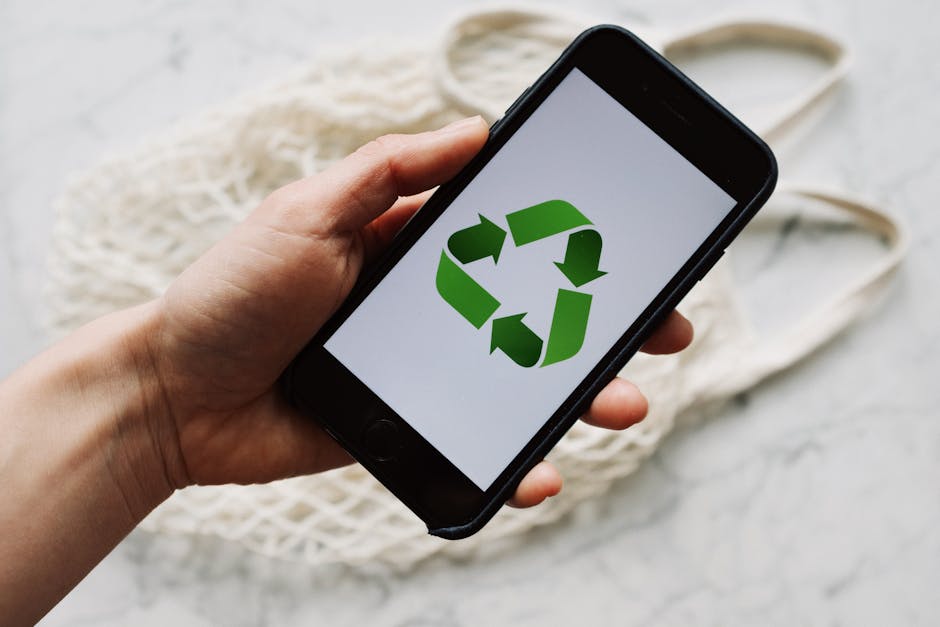Sustainable Workplace Practices: A Comprehensive Guide to Waste Reduction
“This comprehensive guide explores practical waste reduction strategies for modern workplaces, helping organizations minimize their environmental impact while optimizing resources. Learn how to implement effective waste management practices, leverage technology for paperless operations, and create a culture of sustainability that engages employees at all levels. ”

Sustainable Workplace Practices: A Comprehensive Guide to Waste Reduction
In today's environmentally conscious business landscape, waste reduction has become a critical component of corporate sustainability initiatives. Organizations of all sizes are recognizing that minimizing waste not only benefits the environment but also improves operational efficiency and reduces costs. This comprehensive guide explores effective strategies for implementing waste reduction practices in the modern workplace.

Understanding Waste Reduction in the Workplace
Waste reduction, also known as source reduction, is the practice of using less material and energy to minimize waste generation and preserve natural resources. Unlike recycling, which processes materials after they become waste, waste reduction focuses on preventing materials from becoming waste in the first place.
For corporate HR managers, IT departments, facility managers, and educational institutions, implementing waste reduction strategies offers multiple benefits:
- Cost savings through reduced purchasing, disposal, and operational expenses
- Enhanced corporate image and alignment with environmental, social, and governance (ESG) goals
- Improved employee morale and engagement through meaningful sustainability initiatives
- Regulatory compliance with increasingly stringent environmental regulations
Key Strategies for Workplace Waste Reduction
1. Conduct a Waste Audit
Before implementing any waste reduction program, it's essential to understand your current waste stream. A comprehensive waste audit helps identify:
- Types and volumes of waste generated
- Areas and departments producing the most waste
- Opportunities for immediate reduction
- Baseline metrics for measuring improvement
Many organizations are surprised to discover that paper waste, food waste, and single-use items often constitute the largest portions of their waste stream. This insight allows for targeted reduction strategies.
2. Embrace Digital Transformation
One of the most effective ways to reduce waste is to minimize paper usage through digital alternatives. Workflow optimization tools can help streamline processes while eliminating paper:
- Implement digital document management systems for paperless document storage and retrieval
- Use electronic signature platforms for contracts and approvals
- Create digital forms for internal processes and customer interactions
- Leverage collaboration tools for digital communication and project management
By digitizing workflows, organizations not only reduce paper waste but also improve efficiency and enable remote work capabilities.

3. Optimize Procurement Practices
Sustainable procurement plays a crucial role in waste reduction by addressing waste at its source:
- Buy in bulk to reduce packaging waste
- Choose durable, repairable items over disposable alternatives
- Select products with minimal or recyclable packaging
- Partner with suppliers who have their own waste reduction initiatives
- Implement a sustainable purchasing policy that prioritizes environmentally friendly products
For IT departments, this might mean selecting equipment with longer lifecycles or partnering with manufacturers that offer take-back programs for end-of-life electronics.
4. Create Effective Recycling Programs
While the primary focus should be on reducing waste generation, comprehensive recycling programs remain essential for handling inevitable waste:
- Install clearly labeled recycling stations throughout the workplace
- Provide education on proper sorting and contamination prevention
- Consider specialized recycling for items like batteries, electronics, and light bulbs
- Track recycling rates and share successes with employees
- Partner with certified recycling vendors who provide transparency about where materials go
Modern knowledge management systems can help maintain and distribute up-to-date recycling guidelines across the organization.
5. Address Food Waste
For workplaces with cafeterias or break rooms, food waste often represents a significant portion of the waste stream:
- Implement composting programs for food scraps
- Partner with food recovery organizations to donate unused food
- Right-size food ordering for meetings and events
- Encourage reusable containers, utensils, and mugs
- Install water filtration systems to reduce bottled water usage
These initiatives not only reduce waste but can also foster community connections through food donation programs.
Leveraging Technology for Waste Reduction
Modern technology offers powerful tools for waste reduction initiatives:
Smart Building Systems
Green building technologies and smart systems can significantly reduce resource consumption:
- Occupancy sensors that adjust lighting and HVAC based on actual usage
- Energy management systems that optimize power consumption
- Water-efficient fixtures with automatic controls
- Building analytics that identify waste and inefficiency
These systems not only reduce waste but also provide valuable data for continuous improvement.
Mobile Applications for Engagement
Mobile applications can drive employee engagement in waste reduction:
- Apps that gamify recycling and waste reduction
- Digital platforms for sharing reusable items within the organization
- Tools for tracking individual and departmental sustainability metrics
- Platforms for suggesting and implementing waste reduction ideas
By making sustainability visible and interactive, these applications help build a culture of waste consciousness.

Artificial Intelligence and Predictive Analytics
Advanced technologies like predictive analytics and AI can take waste reduction to the next level:
- Predictive maintenance to extend equipment life and reduce replacement waste
- AI-powered inventory management to minimize excess ordering
- Smart waste bins that monitor fill levels and optimize collection
- Analytics that identify patterns and opportunities for waste reduction
These technologies help organizations move from reactive to proactive waste management.
Building a Culture of Waste Reduction
Technology and systems alone aren't enough—creating lasting change requires building a culture of waste consciousness:
Leadership Commitment
Visible support from leadership is crucial for successful waste reduction initiatives:
- Include waste reduction goals in strategic planning
- Allocate resources for sustainability initiatives
- Recognize and reward waste reduction efforts
- Model sustainable behaviors
When leaders demonstrate commitment to waste reduction, employees are more likely to follow suit.
Employee Education and Engagement
Informed and engaged employees are the foundation of effective waste reduction:
- Provide regular training on waste reduction practices
- Create green teams to champion initiatives
- Solicit and implement employee suggestions
- Share success stories and progress updates
- Include sustainability in onboarding for new employees
Activity-based workplace designs can further reinforce sustainable behaviors by creating spaces that naturally encourage resource efficiency.
Measurement and Accountability
What gets measured gets managed. Establish clear metrics for waste reduction:
- Track waste diversion rates
- Monitor paper consumption
- Measure energy and water usage
- Calculate cost savings from waste reduction
- Report progress toward sustainability goals
Regular reporting keeps waste reduction visible and maintains momentum for continuous improvement.
Industry-Specific Waste Reduction Strategies
Different workplace environments face unique waste challenges and opportunities:
For Corporate Offices
- Implement hot-desking to reduce space requirements and associated resource consumption
- Create paperless meeting policies with digital presentation tools
- Establish centralized printing with default double-sided settings
- Develop clear guidelines for electronic waste disposal
- Organize regular "clean desk" days to declutter and redistribute unused supplies
For Educational Institutions
- Implement digital learning platforms to reduce paper handouts
- Create student-led sustainability initiatives
- Establish surplus property exchanges for furniture and equipment
- Develop specialized recycling for laboratory and art supplies
- Incorporate waste reduction into curriculum and campus activities
For Healthcare Facilities
- Evaluate single-use versus reusable medical supplies where appropriate
- Implement proper segregation of different waste streams
- Optimize inventory management to reduce expired product waste
- Consider reprocessing programs for eligible medical devices
- Implement electronic health records to reduce paper consumption
Overcoming Common Challenges
Implementing waste reduction initiatives often faces challenges:
Budget Constraints
- Focus on initiatives that generate immediate cost savings
- Start with low or no-cost changes to build momentum
- Calculate and communicate ROI for sustainability investments
- Explore grants and incentives for environmental initiatives
- Partner with other organizations to share resources and costs
Resistance to Change
- Address concerns directly and provide clear rationale
- Start with small, visible wins to demonstrate benefits
- Identify and engage influential champions across departments
- Make sustainable options the default choice where possible
- Recognize and celebrate adoption of new practices
Measurement Difficulties
- Start with simple metrics that can be easily tracked
- Leverage existing systems for data collection where possible
- Consider third-party waste audits for baseline and progress assessment
- Focus on trends rather than perfect measurement
- Use visual indicators to make progress tangible

The Future of Workplace Waste Reduction
As technology and sustainability practices evolve, several trends are shaping the future of workplace waste reduction:
Circular Economy Principles
Forward-thinking organizations are moving beyond waste reduction to embrace circular economy principles:
- Designing products and processes for reuse and recycling
- Implementing take-back programs for company products
- Creating closed-loop systems within operations
- Partnering with suppliers and customers on circular initiatives
- Exploring product-as-service models that reduce material consumption
Integration with Climate Strategy
Waste reduction is increasingly recognized as an important component of climate strategy:
- Calculating and reducing emissions associated with waste
- Incorporating waste metrics into carbon footprint assessments
- Aligning waste reduction with science-based climate targets
- Communicating waste reduction as part of climate action
- Exploring carbon offset opportunities through waste projects
Advanced Technologies
Emerging technologies promise to further transform waste reduction:
- Blockchain for transparent supply chain and waste tracking
- Internet of Things (IoT) sensors for real-time waste monitoring
- Augmented reality for maintenance and repair guidance
- 3D printing for on-demand production and reduced shipping waste
- Machine learning for optimized resource allocation
Conclusion: Creating a Sustainable Workplace Through Waste Reduction
Effective waste reduction requires a comprehensive approach that combines technology, process improvements, and cultural change. By implementing the strategies outlined in this guide, organizations can significantly reduce their environmental footprint while improving operational efficiency and reducing costs.
The journey toward waste reduction is continuous, with opportunities for improvement at every stage. By starting with high-impact initiatives, measuring progress, and building a culture of sustainability, organizations can create meaningful change that benefits both the environment and the bottom line.
Remember that waste reduction is just one component of a broader sustainability strategy. For maximum impact, integrate waste reduction with other initiatives such as energy efficiency, water conservation, and sustainable transportation to create a truly comprehensive approach to workplace sustainability.
By embracing waste reduction as a core business practice rather than a peripheral initiative, organizations can position themselves as leaders in corporate sustainability while enjoying the many benefits of a more efficient, less wasteful operation.